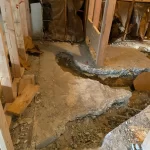For decades, California has been infamous for its housing challenges. Cities like Los Angeles and San Francisco have long symbolized the struggle, with skyrocketing rents, record-breaking waitlists for affordable units, and families forced to make impossible choices between shelter, food, and healthcare. The dream of finding an affordable home often felt like chasing a mirage in the desert. Yet in 2025, the landscape is beginning to shift. Thanks to expanded federal tax credits, sweeping environmental reforms, and an unprecedented commitment in the state budget, California is entering a new era many are calling the California affordable housing boost 2025. Unlike past attempts that barely scratched the surface, this surge feels substantial, with developers finally breaking ground on large-scale projects, renters finding hope where none existed before, and communities bracing for positive, long-term change.
In this blog, we’ll take a closer look at how tax credits, CEQA reforms, and budget strategies are fueling this long-awaited and potentially transformative housing boom.
Federal Tax Credit Expansion: A Game Changer for LIHTC
The Low-Income Housing Tax Credit (LIHTC) has long been the backbone of affordable housing development in the U.S. But with new legislation tied to the Trump spending package, housing credits, the program just got its biggest boost in years.
- Doubling Capacity: The LIHTC allocation is expanding significantly, meaning developers can finance more units than before.
- Incentives for Equity: Investors are increasingly attracted to projects thanks to stronger returns tied to affordable housing tax credits.
- Long-Term Stability: Developers are finally getting predictability that allows them to plan multi-year projects.
This LIHTC expansion in California is expected to double affordable housing production in the next five years. For cities struggling with shortages, that’s a lifeline. But the effects go beyond numbers—it’s giving renters real hope that the housing production boost will meet their needs.
California’s Response: CEQA Reforms and Budget Moves
At the state level, California isn’t standing still. Governor Newsom has put affordable housing at the top of his agenda, pairing funding with reforms.
- Budget Commitments: The Newsom housing budget earmarks billions specifically for affordable housing programs, ensuring communities get the resources they need.
- CEQA Reforms: California’s environmental review law, often criticized for slowing housing projects, has been streamlined through targeted CEQA housing reform measures. This includes exemptions for certain projects, reducing costly delays.
- Legal Updates: The state is rolling out new tools like the YIGBY law (Yes In God’s Backyard), which empowers faith-based organizations to build affordable housing on underused land.
Together, these moves represent a practical effort to cut through bureaucracy. With CEQA exemptions for housing now in play, developers can move faster without compromising environmental protections. Combined with the California housing legislation 2025, these changes set the stage for the largest housing build-out in decades.
What All This Means for Developers & Renters
The ripple effects of the California affordable housing boost 2025 are significant:
- For Developers:
- Easier access to financing via the LIHTC expansion, California
- Faster approvals thanks to CEQA housing reform
- More incentives from affordable housing tax credits
- For Renters:
- More units available means shorter wait times.
- Expanded AB 1033 ADU laws create more accessory dwelling units, giving renters smaller, more affordable options.
- Projects in both urban and suburban areas increase choices.
This isn’t just about policy—it’s about people finally seeing opportunities where there were once none. For the first time in years, the demand for affordable housing in California may be met with supply.
Projections: How Many Homes and Where?
Analysts estimate that the housing production boost will deliver tens of thousands of new units over the next few years. These will be spread across key regions:
- Los Angeles: A hub for projects tied to both affordable housing tax credits and CEQA exemptions.
- San Francisco Bay Area: Benefiting heavily from California housing legislation 2025 and faith-based YIGBY initiatives.
- Central Valley: Growing rapidly, with new construction addressing both farmworker housing and suburban sprawl.
The AB 1033 ADU law will also increase unit counts by allowing homeowners to create income-generating rentals. These small-scale solutions may not solve the entire crisis, but they add much-needed flexibility.
Challenges Ahead Despite the Momentum
While the progress is exciting, challenges remain:
- Rising Costs: Even with the Newsom housing budget, labor and materials are more expensive than ever.
- Local Resistance: Some communities still oppose dense developments despite the California affordable housing boost 2025.
- Implementation Delays: Passing a law doesn’t always mean immediate action—developers often face hurdles before shovels hit the ground.
Critics argue that without stronger enforcement, some of the CEQA housing reform benefits may be blunted. Others caution that the Trump spending package’s housing credits may not fully offset rising construction costs. In short, the path forward is promising but far from guaranteed.
Moving Forward: Policy Outlook & Community Impacts
Looking ahead, the California affordable housing boost 2025 offers a unique chance to turn the tide on decades of shortage. Key trends include:
- Sustained Investment: Continued funding through the Newsom housing budget and federal support.
- Innovative Approaches: Growth in ADUs under AB 1033 ADU and YIGBY-backed projects.
- Community Benefits: More units mean lower rents, shorter commutes, and stronger neighborhoods.
The bottom line is simple: reforms like CEQA exemptions for housing, paired with federal affordable housing tax credits, are moving California closer to a sustainable housing future. However, policymakers, developers, and community advocates must stay the course if the momentum is to be sustained.
California’s Housing Future
The California affordable housing boost 2025 is real, and it’s reshaping the state’s housing landscape. Between the LIHTC expansion, California CEQA housing reform, and the Newsom housing budget, the conditions for a genuine housing production boost are finally in place. With help from new laws like the YIGBY law, AB 1033 ADU, and the federal Trump spending package housing credits, families across California can begin to see hope for stable homes. For more insights, partnership opportunities, or to discuss how these policies affect your community, contact us today.










